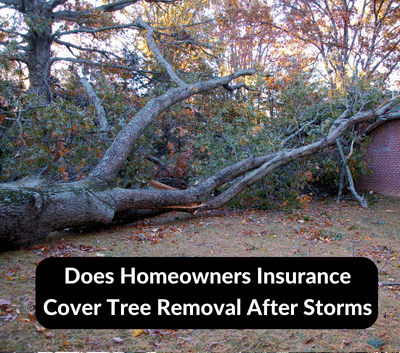After a fierce storm, the landscape can be left devastated, with fallen trees posing a significant challenge for homeowners. Amid the chaos, it’s crucial to understand the extent of your homeowner’s insurance coverage. Let’s delve into the question: Does your homeowner’s insurance policy cover tree removal after storms? Read out the complete guide and understand everything easily.
Table of Contents
Understanding Homeowners Insurance
Before we explore the specifics of tree removal coverage, let’s take a moment to grasp the essence of homeowners insurance. This invaluable protection shields you from unexpected financial burdens resulting from damages to your property. Depending on your policy, it can cover a range of incidents, including storm-related issues like fallen trees.
Coverage for Tree Removal
When it comes to tree removal, homeowners insurance typically adheres to a general rule. While policies may vary, they often cover tree removal expenses in specific circumstances. These circumstances include damage to your insured structure or instances where fallen trees obstruct access or cause damage to utility lines. However, it’s essential to review your policy for any limitations or exclusions related to tree removal.
Additional Considerations
When faced with tree-related storm damage, it’s vital to consider a few additional factors. First and foremost, meticulously review your policy’s terms and conditions to gain a comprehensive understanding of your coverage. It’s also wise to document the damage and tree removal process, including taking photographs and keeping receipts.
To ensure clarity and initiate the claims process, contacting your insurance provider should be a priority. They can provide guidance, clarify coverage details, and assist you in filing a claim efficiently. Remember, proactive communication is key when seeking reimbursement for tree removal expenses.
Alternative Options
While homeowners insurance is designed to provide financial protection, it’s worth exploring alternative sources of assistance for tree removal costs. Investigate community programs or local government initiatives that might offer aid for storm-related damages. Additionally, you may consider adding endorsements or riders to your policy to enhance coverage specifically for tree removal.
Frequently Asked Questions
Does homeowners insurance cover lightning damage?
Yes, homeowners insurance typically covers lightning damage. It typically includes coverage for damage caused by lightning strikes to the insured property and its contents, as well as other related damages like fire. However, policy specifics may vary, so it’s essential to review your insurance policy for full details.
Does homeowners insurance cover mold?
Homeowner’s insurance coverage for mold varies depending on the cause. Generally, it may cover mold damage if it is a result of a covered peril, such as a burst pipe or storm damage. However, it typically does not cover mold caused by maintenance issues or neglect. Review your policy to understand the specific coverage.
Conclusion
In the aftermath of a storm, dealing with fallen trees can be a daunting task. Understanding your homeowner’s insurance coverage for tree removal is vital to alleviate the financial burden. Review your policy, document the damage, and engage in proactive communication with your insurance provider. By taking these steps, you can ensure that you make the most of your insurance coverage and protect your home from the aftermath of nature’s fury.




